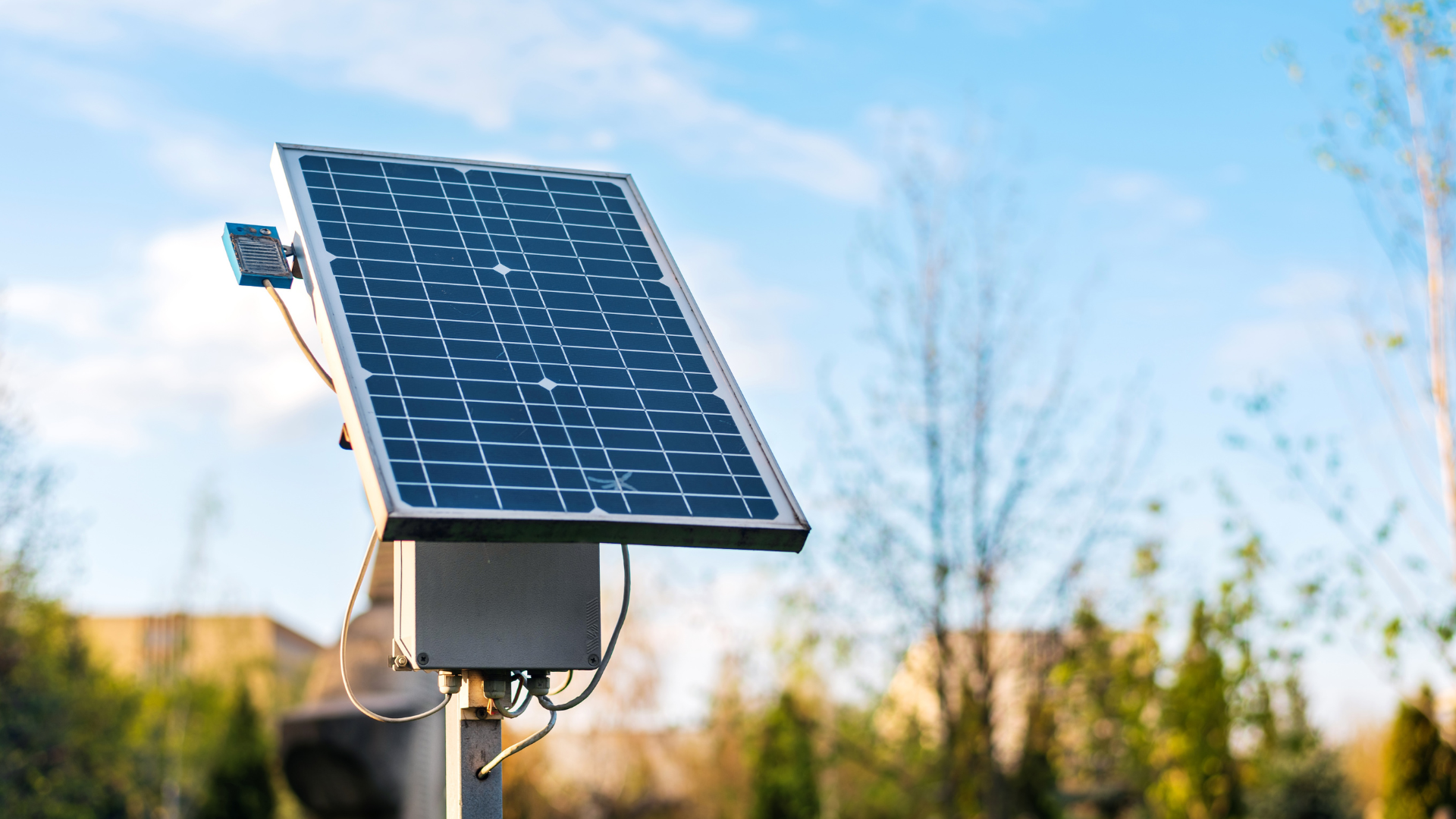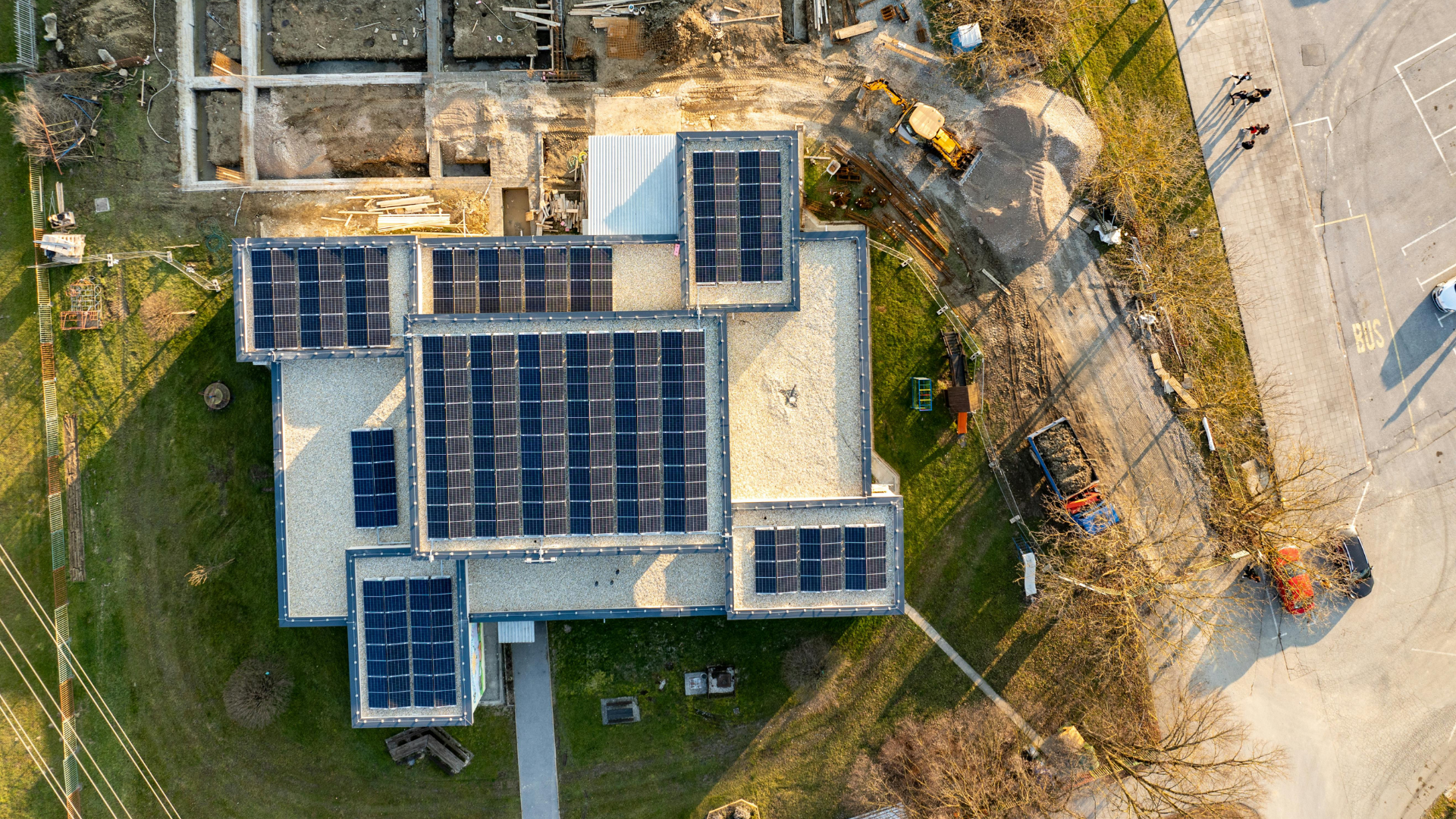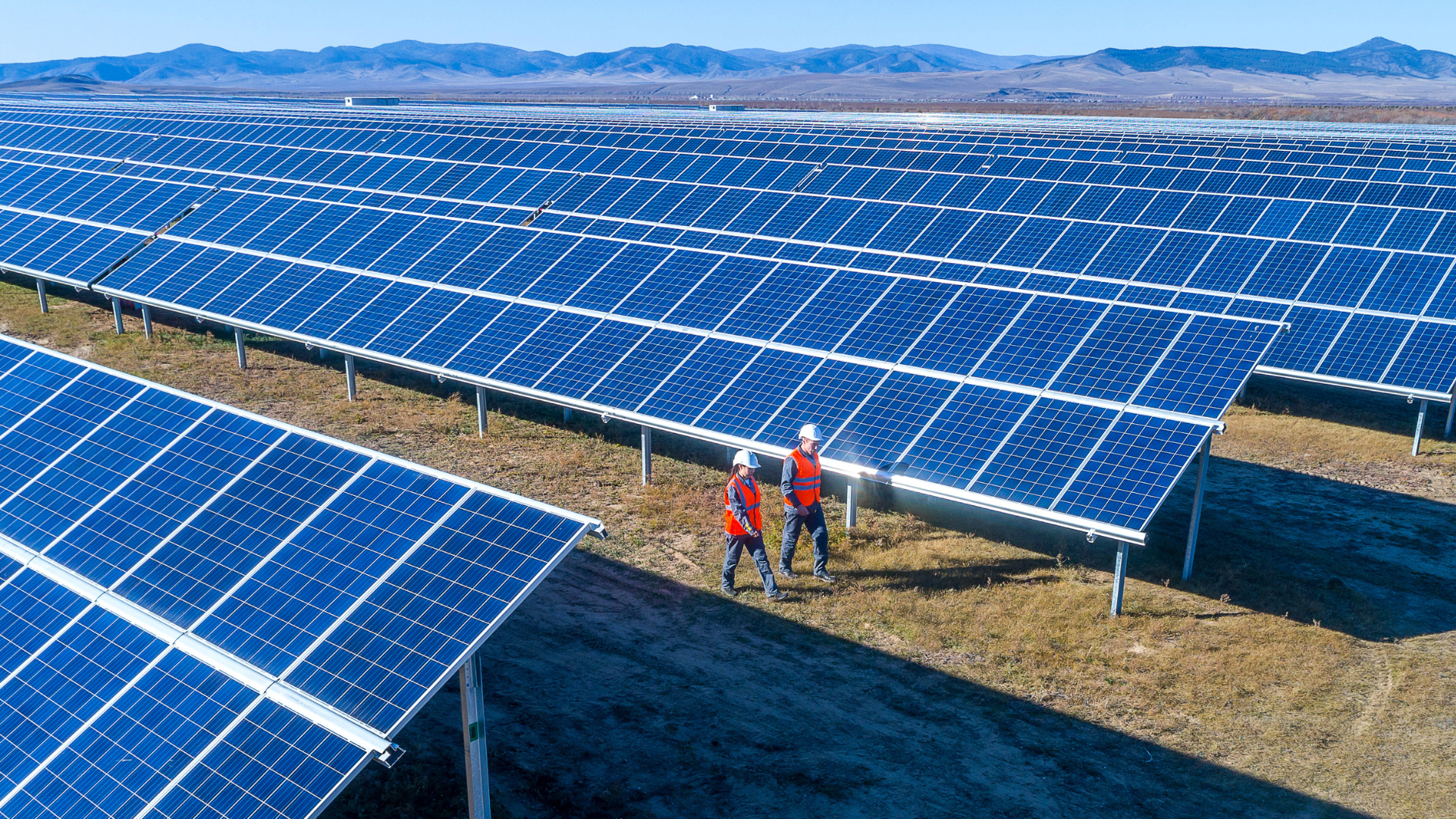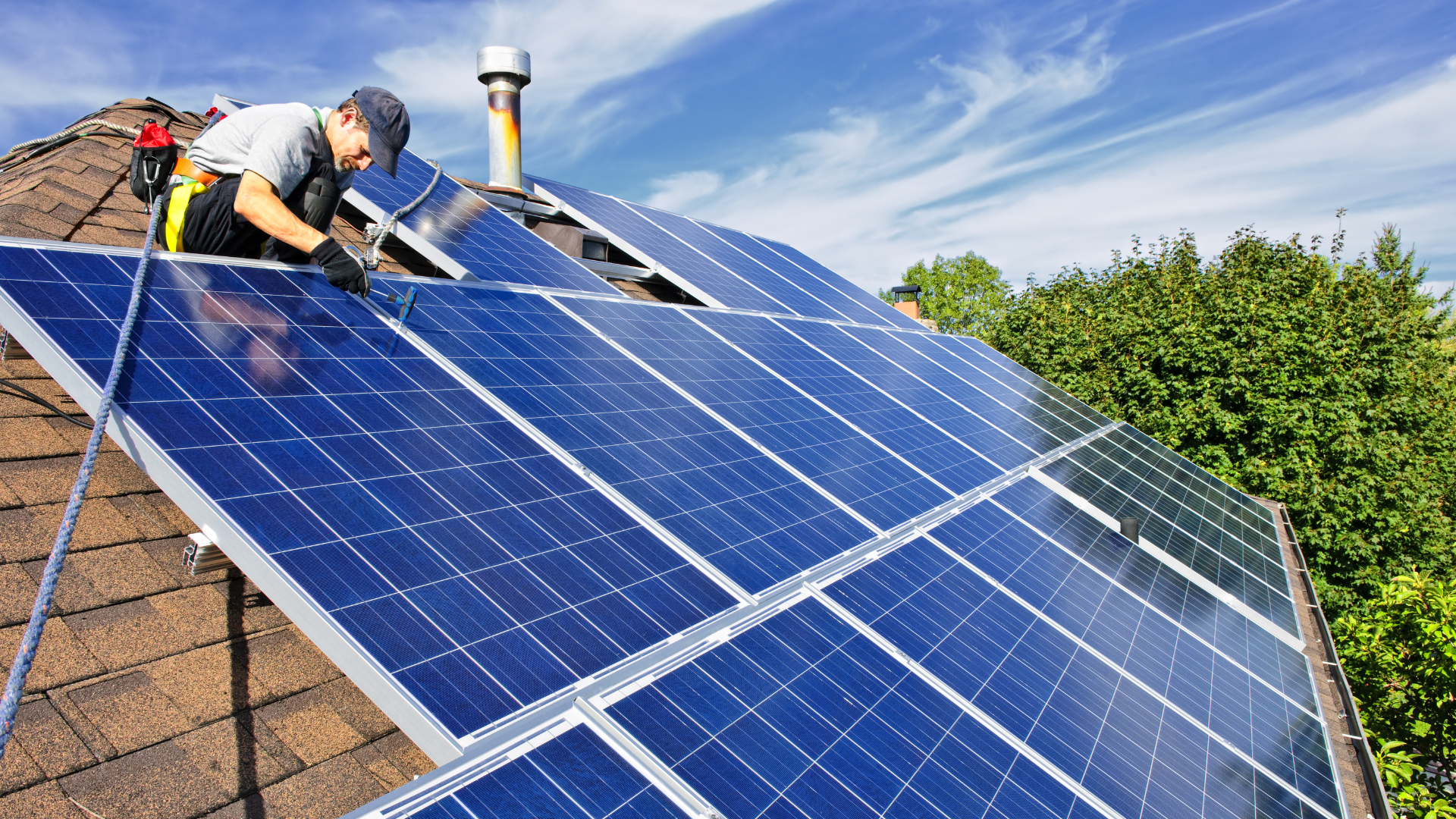November 4, 2025
Audio overview: Listen & Learn
India’s solar story is more than a headline; it’s a national movement driven by bold policies, surging domestic manufacturing, and growing demand for clean power.
Yet navigating central subsidies, state-level programs, net-metering rules, and green financing schemes can feel like a maze.
It’s no wonder that businesses and buyers often struggle with scattered information and varying requirements.
That’s where a smart CRM steps in, not just as a contact manager, but as a powerful ally. This blog will guide solar enterprises and customers alike through India’s incentive landscape and show how CRM tools can orchestrate subsidy and financing processes with clarity and speed.
Solar Subsidies India: How CRM Simplifies the Process
Solar subsidies in India, offered by the government of India and various state government portals, have made adopting solar energy more affordable in 2025.
These subsidy programs are available for residential, commercial, and industrial users, but navigating them isn’t always simple.
With new policies and frequent updates, customers often struggle to get clear details. However, by automating documents, tracking state-wise rules, and sending real-time updates, CRM makes solar adoption faster and stress-free.
Key Takeaways
- Government subsidies, net-metering, and concessional loans make solar adoption more affordable across India in 2025.
- State-specific rules and incentives create complexity, but also offer homeowners and businesses significant financial savings.
- Manual tracking leads to missed subsidies and delays, making automation through CRM tools essential.
- Sunbase CRM simplifies subsidy management, financing, and project tracking, saving time while boosting customer satisfaction and solar adoption.
Understanding Solar Subsidies in India (2025 Update)
What Are Solar Subsidies and Why Do They Matter?
Solar subsidies in India are financial incentives introduced by the government of India to make clean energy more accessible and affordable.
The idea is simple: a subsidy reduces the upfront installation cost for rooftop solar systems, allowing homeowners, businesses, and industries to adopt solar without heavy financial strain.
In 2025, the MNRE (Ministry of New & Renewable Energy) continues to play a key role, launching new programs and updates through its state government portals.
These initiatives are not just about money; they are about accelerating India’s transition to renewable energy and reducing dependence on fossil fuels.
Subsidy information is available on both central and state portals, with links in English and vernacular languages, making it easier for users to get details.
Whether it’s the PM Surya Ghar scheme or state-specific top-ups, these government efforts help India move closer to its clean energy goals.
Did you know India generated a record 108,494 GWh of solar energy in 2025, surpassing Japan to become the world’s third-largest solar power producer?
Are you still stuck on outdated tools? Check out Why Solar Businesses are switching from Excel to Sunbase.
Key Types of Solar Subsidies in India

When talking about solar subsidies in India, we’re referring to financial relief provided by the government of India, and, in many cases, by state governments too, through official portals. Here's how the various schemes help reduce upfront costs in 2025:
1. Central Financial Assistance (CFA): Under the PM Surya Ghar Muft Bijli Yojana, the government of India offers ₹30,000 per kW for systems up to 2 kW, ₹18,000 for 3 kW, and a cap of ₹78,000 for systems larger than 3 kW.
This support is disbursed via the MNRE-managed national portal and state DISCOM portals.
2. State-Level Solar Subsidies: Several states layer in top-ups. For instance, Delhi adds ₹10,000 per kW (up to ₹30,000 total); Tamil Nadu- ₹20,000 per kW, Gujarat- ₹10,000–₹20,000 per kW, and Uttar Pradesh offers ₹15,000 per kW, with a maximum capping at ₹30,000.
3. Net-Metering Incentives: This lets you export excess solar energy to the grid and earn bill credits. In many places, including Delhi, Gujarat, Maharashtra, Karnataka, and UP, consumers can offset 100% of sanctioned load annually at retail tariffs. System sizes typically range from 1 MW to 2 MW.
4. Special Loan Schemes & Interest Subsidies: Many banks and NBFCs offer green loans at preferential rates, backed by government schemes. These loans ease upfront financial burdens for residential, commercial, and industrial solar adopters.
Together, these incentives, from central CFA to state-level support, net-metering credits, and concessional loans, make solar more affordable and accessible across India in 2025.
(Sources: Vay Solar, Solar Tiger)
State-Wise Solar Subsidy Breakdown (2025 Guide)
Top States Offering Maximum Benefits
| State | Central CFA (2025) | State Top-Up / Special Incentive | Net-Metering Policy |
|---|---|---|---|
| Gujarat | ₹30,000 per kW (1–2 kW), ₹18,000 for 3rd kW, capped at ₹78,000 | Extra ₹10,000–₹20,000 per kW (up to 3 kW) | Very favorable, quick approvals |
| Maharashtra | Same central CFA up to ₹78,000 per system | ₹25,000 to ₹60,000 top-up based on system size, but DISCOM approvals allow effective support | Available, statewide |
| Rajasthan | Central CFA up to ₹78,000 | Regional programs, up to 35% subsidy in some DISCOM areas | Available |
| Karnataka | Central CFA up to ₹78,000 | State portals occasionally add extra incentives for priority groups | Available |
| Delhi | Central CFA up to ₹78,000 | Flat ₹10,000 per kW (up to 3 kW, max ₹30,000) | Simplified approvals |
What is the Application Process for State-Specific Solar Subsidies in India
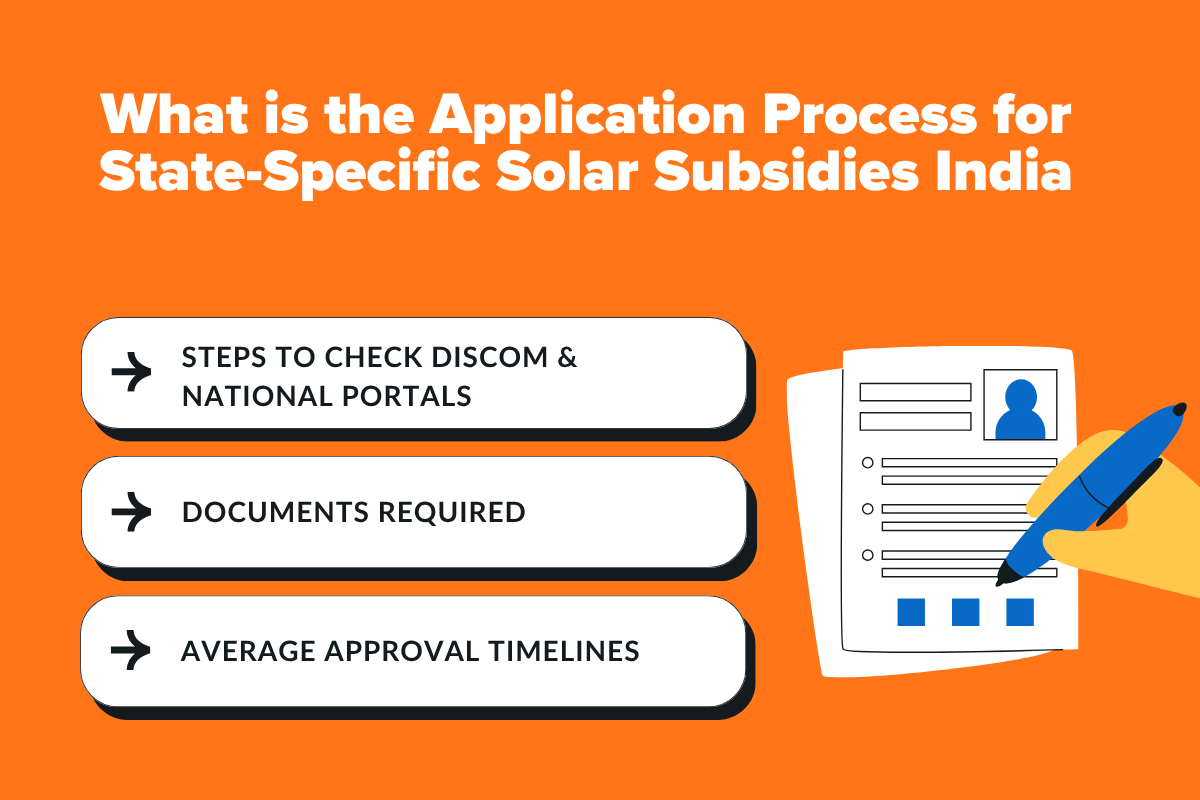
1. Steps to Check DISCOM & National Portals
Start by registering on the National Rooftop Solar Portal. Choose your state, district, and electricity distribution company (DISCOM), then enter your consumer number to auto-fill your details through OTP verification.
Next, select an MNRE-approved vendor. Your DISCOM will conduct a feasibility check before installation begins.
2. Documents Required
To apply successfully, you'll need:
- Proof of identity (e.g., Aadhaar or PAN)
- Proof of address and property ownership (electricity bill, property deeds)
- Bank details (cancelled cheque/passbook copy for subsidy credit)
- Installation paperwork, such as invoices, commissioning certificate, net-metering application, and meter details
These documents are to be uploaded on the portal after installation and net-metering is set up.
3. Average Approval Timelines
A typical installation timeline, from booking to net-metering and subsidy disbursement, spans about 60 days.
Here’s a general breakdown:
- Day 0: Booking confirmed
- Days 3–7: Site survey, paperwork submission
- Day 15–40: Installation, net-metering application, DISCOM approval
- Day 60: Commissioning and subsidy claim
Once paperwork and inspection are complete, DISCOM processes the subsidy. Funds may reach your bank account in 30 days per some state schemes, or up to 60–120 days in others.
Financing Options for Solar Energy in India
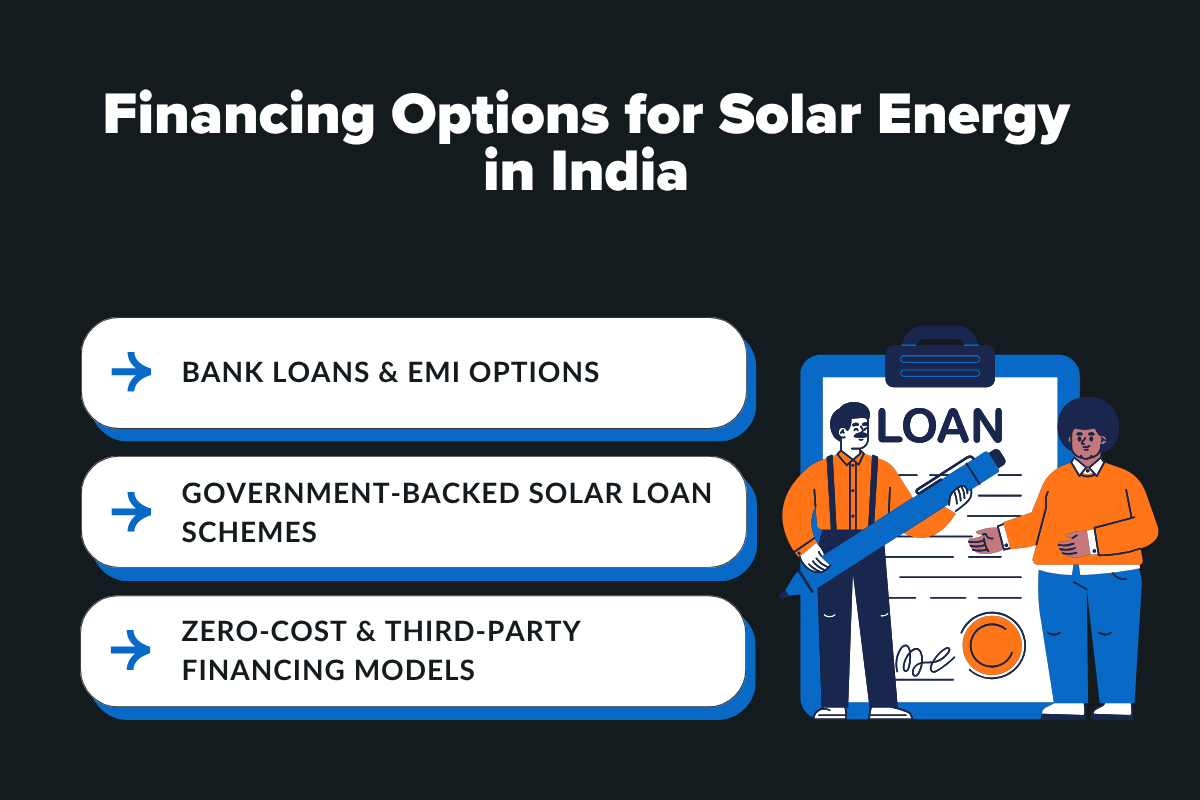
Bank Loans & EMI Options
Financing solar doesn’t have to be stressful. In India, banks and NBFCs now offer flexible EMI plans that make rooftop solar affordable. Public Sector Banks provide PSB Loans in 59 Minutes via the official government portal, while SBI and HDFC offer specialized Green Loans.
Typical interest rates range from 7% to 10%, with repayment periods up to 10 to 15 years. To qualify, you need a stable income and a good credit history.
When combined with solar subsidies in India provided by the government of India, these loans help reduce upfront costs, making 2025 the perfect time to switch to clean energy.
Government-Backed Solar Loan Schemes
The government of India supports solar adoption through initiatives like the PM-KUSUM scheme, which offers farmers low-interest loans for solar pumps and small plants.
Residential and commercial users can also access MNRE-approved solar loans through partnered banks and NBFCs, where part of the project cost is covered under central and state subsidy programs.
These loans, linked to state government portals, are transparent and easy to access, with repayment spanning 5–10 years. Updated guidelines are available in English, with links about eligibility and required documents.
Pairing such loans with solar subsidies in India ensures reduced installation costs, helping both rural and urban households adopt solar in 2025.
Zero-Cost & Third-Party Financing Models
If you’d rather avoid loans, third-party financing is a smart path. Models like Power Purchase Agreements (PPAs) let developers install and own the solar system on your property; you only pay for the energy generated, often cheaper than grid rates.
Solar leasing offers another option, with fixed monthly payments and an option to buy later. Many corporates in India use these tie-ups to meet sustainability goals without upfront investment.
Combined with solar subsidies in India and updates from state government portals, these models make renewable energy more accessible. In 2025, clean energy truly comes without financial stress.
Struggling with Sales? Explore the 5 Sales CRM Features Every Solar Company Needs in 2025.
Why Tracking Subsidies & Financing Manually Fails
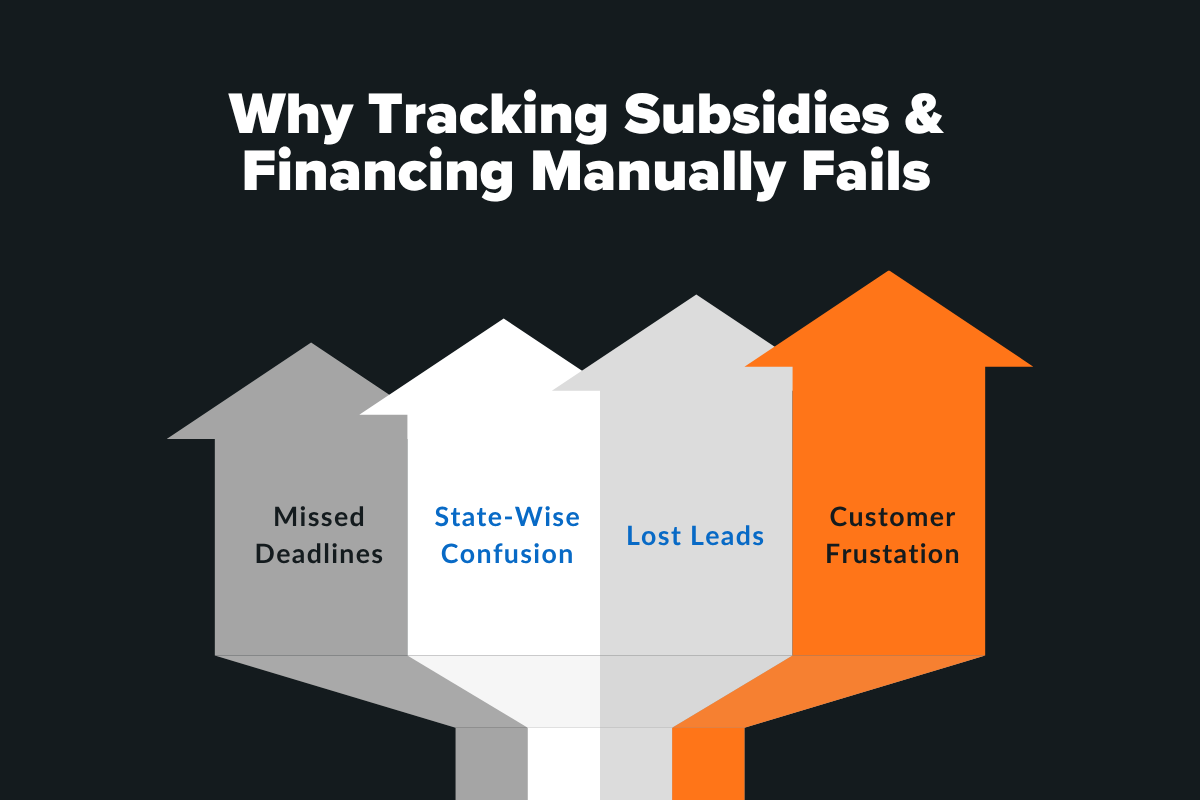
- Missed Deadlines: Many customers applying for solar subsidies in India lose out because manual tracking leads to delayed or incomplete submissions.
- State-Wise Confusion: Each state government portal has its own rules and timelines, making it difficult to stay updated about new subsidy schemes.
- Lost Leads: Solar companies often lose prospects when communication lags, especially with the changing rules by the government of India.
- Customer Frustration: Without timely updates, customers waiting for energy subsidy approvals feel ignored, leading to dissatisfaction.
With critical subsidy details available in English and official links to get updates, manual methods are outdated. Automated CRM workflows ensure every application is tracked efficiently.
Using CRM to Simplify Solar Subsidy & Financing Management
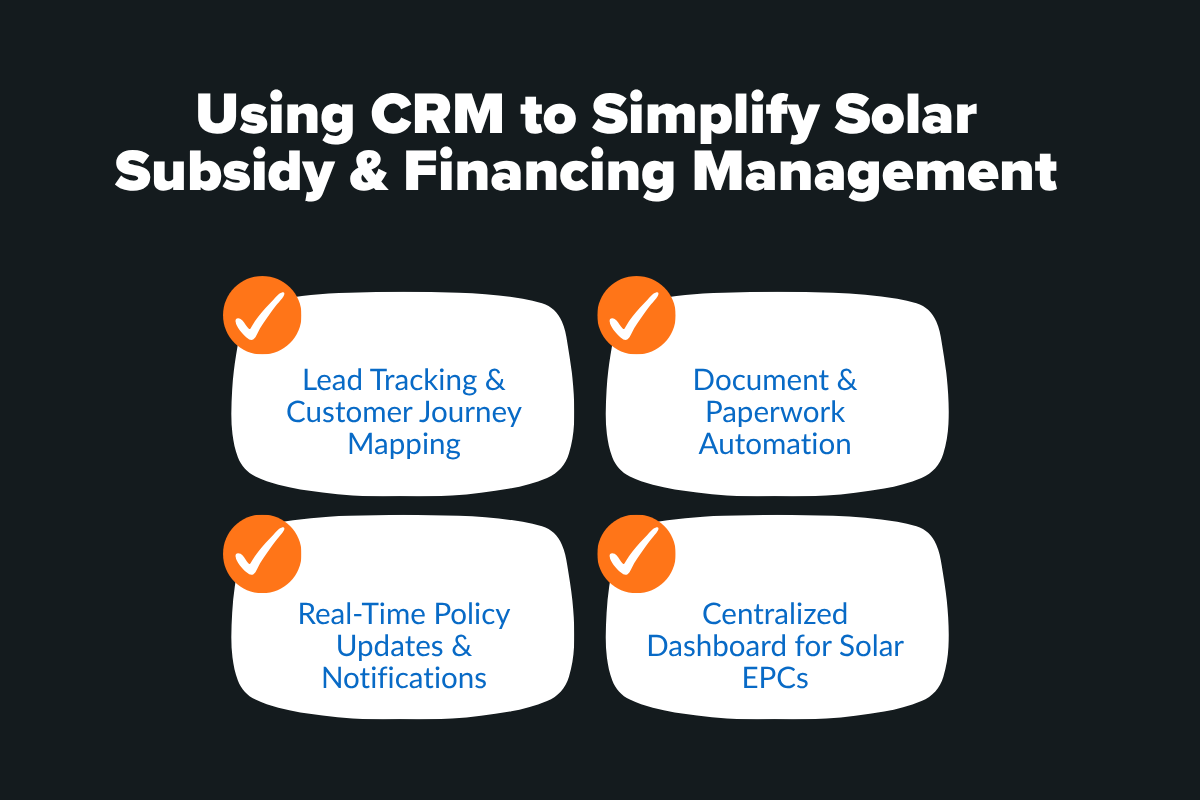
Lead Tracking & Customer Journey Mapping
In today’s competitive solar market, effective lead tracking can make all the difference. With CRM tools, solar businesses can manage the entire customer journey, from the first inquiry to final installation — in one place.
The system ensures each client’s eligibility for solar subsidies in India is mapped clearly, saving time and effort. Since every state government portal has its own process, tracking subsidies manually often creates confusion.
With automation, you can easily check links available in English, know about new updates, and get accurate financing options from the government of India in 2025.
Document & Paperwork Automation
Paperwork has long been a bottleneck in solar adoption. A CRM simplifies this by enabling companies to store, manage, and share all energy subsidy forms digitally.
Automatic reminders ensure customers never miss pending approvals or updates. Since solar subsidies in India vary by the state government portal, automation helps align forms with requirements such as:
- Proof of residence or property documents
- Electricity bills and vendor certificates
- DCR module compliance proofs
With new subsidy details available in English and official links to get updates, businesses save both time and trust while meeting the Government of India rules in 2025.
Real-Time Policy Updates & Notifications
The solar industry changes rapidly, with each state government portal updating schemes differently. A CRM provides real-time notifications, keeping sales teams informed about new solar subsidies in India and their eligibility rules.
Customers also benefit by getting instant alerts when their energy subsidy application is approved. This proactive approach builds confidence and ensures no opportunity slips away.
With updates available in English, along with official links to get verified details from the government of India, solar companies stay one step ahead in 2025, offering unmatched transparency and trust.
Centralized Dashboard for Solar EPCs
For EPC companies managing projects across India, visibility is everything. A centralized CRM dashboard offers a 360° view of:
- Leads in the pipeline
- Subsidy applications per state government portal
- Approval status and pending tasks
This ensures teams stay aligned and no subsidy deadlines are missed. With solar subsidies in India evolving under the government of India’s new energy programs, consolidated dashboards make it easy to track official links in English and quickly access verified details in 2025.
The result: seamless operations, faster installations, and stronger customer relationships.
Know the 7 Ways to Cut Costs in Solar Operations Without Compromising Quality.
Sunbase: CRM Built for Solar Incentives by the Experts
Sunbase isn’t just another generic CRM; it’s purpose-built for solar installers facing the complex layers of solar subsidies in India.
Unlike off-the-shelf tools, Sunbase seamlessly tackles state-specific subsidy tracking, loan management, and net metering approvals through a unified platform.
From streamlined proposal automation to built-in e-signatures and financing integrations, it ensures no client benefit slips through the cracks.
Sunbase users save an impressive 11.6+ hours per week by centralizing their tools, accelerate project completion by 47%, and automate up to 83% of manual tasks.
Sunbase empowers solar businesses with:
- CRM (Customer Relationship Management): Sunbase’s CRM keeps leads, clients, and communication history organized in one place.
- Job Management: Plan, monitor, and execute solar projects seamlessly. Sunbase helps assign tasks, track job progress, and manage timelines in real time.
- Financial Management: Simplify the financial side of your solar business with built-in tools for quotes, proposals, financing options, and e-signatures.
- Lead Capture & Web Forms: Turn your website into a lead-generating engine. Sunbase automatically captures inquiries from web forms, referrals, and campaigns, and adds them to your CRM for instant follow-up.
- Door-to-Door Canvassing Tools: Perfect for field sales teams, these tools help map out neighborhoods, record homeowner data, and track interactions in real-time.
- Proposal Software: Create stunning, data-backed proposals in minutes. Sunbase integrates your design, pricing, and financing information into interactive proposals that clients can view and sign digitally.
- Inventory Control Management: Sunbase helps you track every solar panel, wire, or inverter in your warehouse.
- Visual Board Tracking: View your entire business at a glance. The drag-and-drop project board displays all jobs, their progress stages, and assigned teams.
- Dashboards & Analytics: Sunbase provides real-time dashboards showing leads, job progress, sales pipeline, and overall company performance.
- Mobile & Field Access: Field crews can access job details, upload site photos, and update status from anywhere.
For solar businesses navigating the changing subsidy landscape, Sunbase’s industry-tuned CRM is a game-changer in 2025.
Action Plan for Installers & Homeowners
Here’s your simple, effective roadmap to leverage solar subsidies in India and financing in 2025:
- Review national and state-specific subsidies via official government portals.
- Explore rooftop solar loans and green financing offers.
- Apply for net-metering approvals through DISCOM portals.
- Use CRM platforms like Sunbase to automate filings and track progress.
- Monitor post-installation benefits, like subsidy release and savings, to optimize ROI.
This structured plan helps both installers and homeowners get the most from the government of India’s solar initiatives without losing time or opportunity.
Summing It Up
India’s solar revolution in 2025 isn’t just about panels and power; it’s about opportunity. With generous solar subsidies in India offered by the government of India and layered state government portal incentives, clean energy is more affordable than ever. But complexity often holds people back.
That’s where smart CRMs like Sunbase bring clarity, speed, and confidence. By automating paperwork, tracking approvals, and sharing real-time updates, they ensure every homeowner and installer can get the full benefit of this national solar movement.
About Sunbase
Sunbase is a CRM designed specifically for solar companies, helping you simplify subsidies, financing, and project management in one platform.
Take the next step, schedule your free demo today, and see how Sunbase can transform your solar business!
FAQs
1. Is there any subsidy for solar energy in India?
Yes, both central and state governments provide subsidies up to ₹78,000 for residential rooftop solar under MNRE’s PM Surya Ghar scheme.
2. What is the 20% rule for solar panels?
The 20% rule states that rooftop solar system capacity should not exceed 20% of a consumer’s sanctioned electricity load capacity.
3. Who is eligible for the PM Surya Ghar subsidy?
Residential households owning rooftops, connected to DISCOMs, using MNRE-approved vendors, and applying via national/state portals are eligible beneficiaries.
4. Is PM Surya Ghar Yojana worth it?
Yes, it reduces upfront solar costs, offers free electricity up to 300 units monthly, and ensures long-term savings and sustainability.
I agree to receive marketing messaging from Sunbase at the phone number provided above. I understand data rates will apply, and can reply STOP to OPT OUT.

